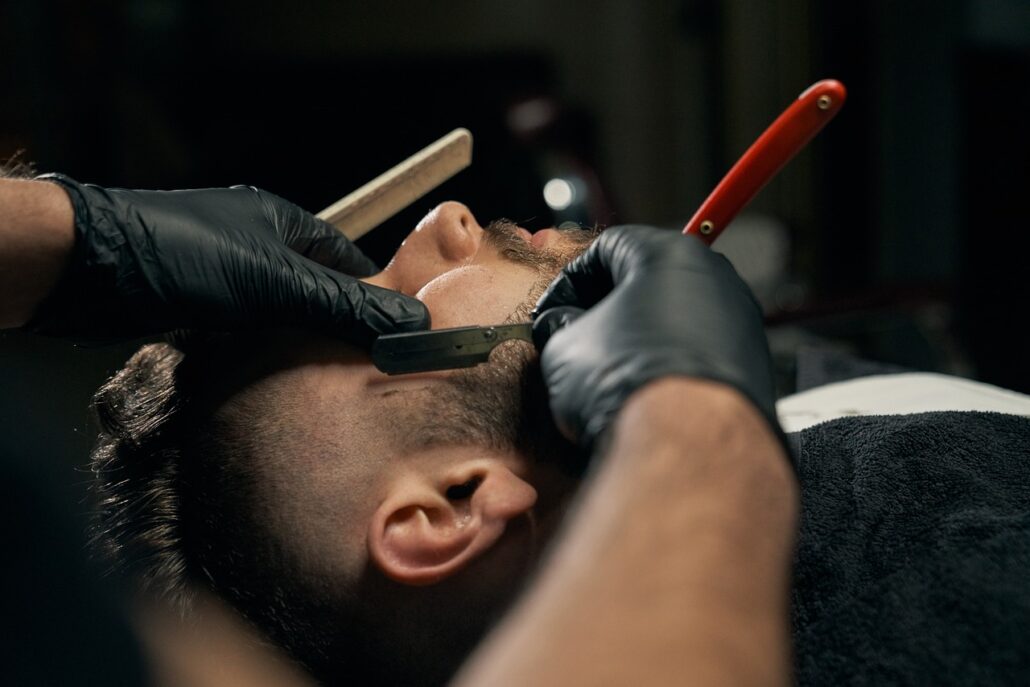If you’re thinking about opening a local barber shop and need help to create an effective business plan, you’re in the right place. With the right guidance and resources, you can develop a strong barber shop business plan that covers all the unique aspects of your company, including services, value proposition, operations, location, and target market. Furthermore, it’s also important to consider the local economy and nationwide industry trends to build a solid business plan.
While general business plan templates and guides can be useful, creating a tailor-made business plan for your company will significantly improve your chances of success. The barber shop industry is conventional, growing at a steady pace every year. Hence, it is difficult for a new entrepreneur to find a space or dominate the market unless they have clear business strategy and vision. With more entrepreneurs looking to tap into this highly competitive industry, having a well-crafted barber shop business plan is absolutely essential.
|
Things to Understand before Creating a Local Barber Shop Business Plan
A local barber shop serves as more than just a place to get a haircut; it’s a vital community hub where people gather, socialize, and build relationships. These establishments often become an integral part of the neighborhood, providing a welcoming space where customers feel valued and connected. The personalized service and familiar faces contribute to a sense of belonging and trust within the community.
To succeed in the barber shop business, you shall understand your customers. Identifying target demographics involves analyzing factors such as age, gender, lifestyle, and income levels. This information helps you design the interior of your barbershop as well as tailor your services and marketing efforts to attract and retain your ideal clientele.
You shall also research and study other local barber shops in the area that will compete with you for a market share. Analyzing competitors’ strengths and weaknesses, as well as identifying gaps in the market, can provide valuable insights into how to uniquely position your barbershop business. Additionally, assessing market needs helps in determining the right mix of services and pricing strategies to meet customer demands and stand out in the competitive market.
The Essential Components of a Barber Shop Business Plan
The essential components of a barbershop business plan are explained below:
- Executive Summary: The executive summary provides a brief overview of your barber shop, outlining its products and services, market analysis and primary objectives. This section should capture the essence of your business and highlight what makes it unique, serving as a snapshot for potential investors or stakeholders.
- Business Description: In this section, offer a detailed description of your barber shop, including its mission, vision, and core values. Explain the inspiration behind your business, the problems it aims to solve, and the overall goals you hope to achieve.
- Market Analysis: Market analysis involves a deep dive into the local market conditions, identifying target demographics, and analyzing the competition. This section provides insights into who your customers are, what they need, and how your barber shop can meet those needs better than existing competitors.
- Organization and Management: Detail the structure of your business and introduce the management team. Include information on the ownership structure, key roles, and the experience and expertise of your team members, which will help in running the business effectively.
- Services Offered: List and describe the services your barber shop will offer. This could include haircuts, shaves, beard trims, and any other grooming services. Clearly defining your services helps in setting customer expectations and planning your operations.
- Marketing Strategy: Outline your strategies for attracting and retaining customers. This section should cover your marketing and promotional plans, including online and offline tactics, branding efforts, and customer engagement strategies.
- Financial Projections: Provide detailed financial forecasts, including projected revenue, budgeting, and financial planning. This section should demonstrate the financial viability of your barber shop, showing how you plan to achieve profitability and manage financial risks.
Exploring Different Barber Shop Models
There are many Barber shops models, each having its own unique characteristics and appeal. Understanding these models can help new entrepreneurs determine the best fit for their business vision and target market in their business plan.
Traditional Barber Shop Model
The traditional barber shop model focuses on classic grooming services such as haircuts, shaves, and beard trims in an old-fashioned setting. These barbershops often offer personalized service and a close-knit community atmosphere. The pros of the traditional barber shop model include strong community ties, loyal customer base, and a timeless appeal. The cons of the traditional barber shop model include limited to traditional services, which may not attract younger or tech-savvy clients.
Modern/Hybrid Barber Shop Model:
The modern barber shop model blends traditional services with contemporary offerings such as hairstyling, color treatments, and skincare. Hybrid barber shops often incorporate technology for online booking, digital marketing, and modern amenities. The pros include broader range of services, appeal to a diverse clientele, and increased revenue opportunities. The cons include higher initial investment, need for continuous updates to stay up-to-date.
Mobile Barber Shop Model:
Mobile barber shop model brings grooming services directly to clients, offering convenience and personalized attention. These barber shops typically operate out of customized vehicles equipped with all necessary tools and amenities. The pros include flexibility in service locations, reduced overhead costs, and unique market appeal. The cons include limited client capacity, dependence on vehicle maintenance, and potential challenges with local regulations.
Step-by-Step Guide to Crafting Your Barbershop Business Plan
Here we’ll provide you with a step-by-step guide to creating a comprehensive barbershop business plan that sets the stage for success. From initial research and data collection to writing each section, and finally, reviewing and refining your plan, we’ll walk you through the essential steps to ensure your business plan is robust and ready to guide your barbershop business towards success.
1. Initial Research and Data Collection:
- Conduct thorough research to gather essential information about the barber shop industry and your local market.
- Finalize your barber shop model that helps you create a competitive advantage over existing businesses.
- Utilize various sources such as industry reports, market surveys, and competitor analysis to gain valuable insights into customer preferences and market trends.
2. Writing Each Section:
- Follow a structured approach to draft each section of your business plan, including the executive summary, business description, market analysis, organization and management, services offered, marketing strategy, and financial projections.
- Provide detailed information and relevant data to support your strategies and goals, ensuring clarity and coherence throughout the document.
3. Reviewing and Refining:
- Once the initial draft is complete, review and revise your business plan thoroughly to ensure accuracy, coherence, and alignment with your objectives.
- Seek feedback from trusted advisors, mentors, or industry experts to identify areas for improvement and refine your plan accordingly, aiming for clarity, persuasiveness, and feasibility.
Writing your own business plan can be daunting and time-consuming, often marred with generic plans and strategies that fail to capture the essence of your vision. Let’s collaborate and craft a bespoke business plan that delivers results! We tailor business plans to raise investment from investors (e.g., angel investors, venture capital and private equity) as well as achieve a strategic objective (e.g., M&A, feasibility and franchise). We can also help you review and refine your existing business plan. Reach out now to get started!
Barber Shop Business Plan Examples
Looking for inspiration to create your own barber shop business plan? We have curated some barber shop business plan examples for you to use them as guidance to create your own:
- Barber Shop Business Plan Example 1: This barber shop business plan was created for a men’s salon named Jonpaul’s. It’s a simple yet good quality business plan.
- Barber Shop Business Plan Example 2: This barber shop business plan was created for the Calfornian market back in 2019 and provides a valuable detailed perspective of establishing and running a barber shop.
- Barber Shop Business Plan Example 3: This barber shop business plan is simple and relatively compact. However, it still serves as a good example of a business plan that helps in understanding the nature and type of information that should be included in the barber shop business plan.
Conclusion
Creating a successful barber shop business plan requires more than just talent with scissors— it demands a well-thought-out business strategy. By utilizing the guidance and resources provided above, you can set a strong foundation for your barber shop business. Your business plan will act as your roadmap, guiding you through each phase of your business lifecycle from the initial business development to expanding your business. With a comprehensive barber shop business plan, you’ll be prepared to navigate challenges and seize opportunities, ultimately setting your barber shop on the path to sustained success.
Useful Resources for Barbershop Business
Business Plan Templates
- Score: A practical template designed to help startups structure their business plans.
- Aceplans Industry-Specific Guides: A comprehensive guide for each industry, helping you craft your own business plan.
Market Research Tools
- IBISWorld: Delivers in-depth reports on the barber shop industry to inform your market analysis.
- Statista: Provides extensive statistical data and market insights to help you understand trends and demographics.
- Google Trends: Analyzes the popularity of search queries to help identify market trends and consumer interests.
Financial Planning Tools
- QuickBooks: A robust tool for managing your barber shop’s finances, including income and expenses.
- Wave Accounting: Offers free accounting and invoicing tools for small businesses.
- Xero: Provides cloud-based accounting software with tools for financial planning and management.
Marketing and CRM Tools
- HubSpot CRM: Helps manage customer relationships and track interactions.
- Mailchimp: Facilitates the creation and management of email marketing campaigns.
- Hootsuite: A platform to schedule and analyze social media posts across multiple channels.
Booking and Appointment Management
- Booksy: Simplifies booking appointments and managing schedules for barber shops.
- Square Appointments: An all-in-one solution for scheduling, payments, and customer management.
- Acuity Scheduling: An online assistant for managing appointments and client bookings.
POS Systems
- Square POS: Easy-to-use POS system for processing payments and managing inventory.
- ShopKeep: A POS system designed for small businesses with robust inventory management features.
- Clover: Offers a range of POS solutions tailored to various business needs.
General Business Tools
- Google Workspace: A suite of productivity and collaboration tools including Gmail, Docs, Drive, and Calendar.
- Trello: Organizes tasks and workflows with boards, lists, and cards.
- Slack: Enhances team communication and collaboration with messaging and file sharing.
Industry Associations
- NAB: Provides resources, advocacy, and networking opportunities for barbers.
- PBA: Offers education, events, and industry insights for beauty professionals, including barbers.
- BCAA: Supports barbers and cosmetologists with resources and networking opportunities.
Industry Magazines
- BarberEVO: Covers trends, tips, and industry news for barbers.
- Modern Barber: Provides insights on the latest styles, tools, and business tips.
- American Salon: Features articles on trends, techniques, and business strategies for salon professionals, including barbers.
Sales and Marketing Tools
- Canva: A design tool for creating marketing materials, social media posts, and more.
- Buffer: Allows you to schedule posts and analyze performance across social media platforms.
- Google My Business: Helps manage your online presence across Google, including search and maps.
Barber Shop Business Plan FAQs:
How to start a barber shop business?
Follow the below listed steps to start a barber shop business:
-
- Select a suitable name for your barbershop business
- Develop your barber shop business plan
- Select an appropriate legal structure for your company
- Open a business bank account
- Raise seed funding for your barber shop business (if needed)
- Search a suitable location
- Register your company for taxation
- Obtain the required business licenses and permits
- Get business insurance
- Buy the required software, equipment and supplies
- Develop digital presence for your barber shop business
- Develop your marketing collateral
- Hire and train staff
- Begin sales
How much do barbershop owners make?
On average, barbershop owners in the United States can expect to earn between $35,000 to $75,000 annually. It is important to note that income of barbershop owners can vary significantly based on several factors, including location, business model, customer base, and overall business management and popularity.
What type of business is a barber shop?
A barber shop is typically classified as a service business. This type of business primarily provides personal grooming services to clients, which include haircuts, shaves, beard trims, and other related grooming services.
How to promote your barber business?
You can promote your barber business by both methods i.e., traditional and digital methods. Key tactics include strong brand identity, building a website and social media, offering promotions and discounts, collaborating with local businesses, optimizing for local SEO, hosting events or workshops, engaging with the community, collecting customer reviews, investing in professional photography, and networking with influencers and local celebrities. Consistent implementation of these strategies can help attract new clients, retain existing ones, and establish your barber shop as a trusted and sought-after destination for grooming services.



